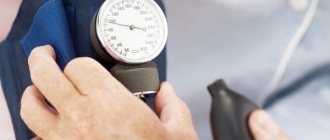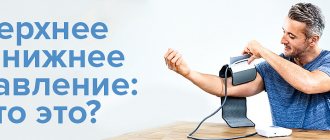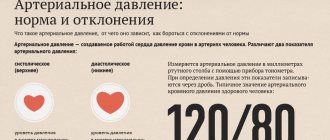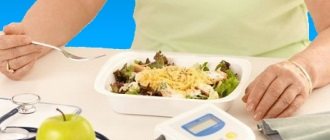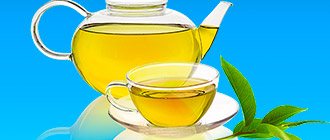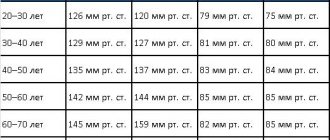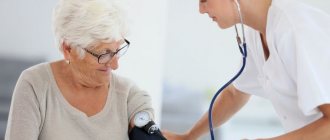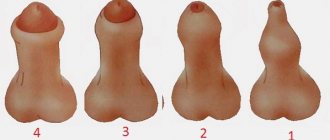- What does the tonometer reading 105 to 65 mean?
- Causes
- Associated symptoms
- Is blood pressure 105 over 65 dangerous?
- First aid for an attack
- Diagnostics and specialists
- Treatment
- Prevention measures
- Blood pressure 105 over 65 during pregnancy
- Blood pressure 105 over 65 in the elderly
- Blood pressure 105 over 65 in children and adolescents
Blood pressure is the first indicator of a person’s well-being and health status. For most people, a blood pressure of 120/80 is considered normal. But should you worry if the tonometer shows a value of 105/65? After all, there are cases when such pressure is the norm.
What does the tonometer reading 105 to 65 mean?
The vascular walls are constantly exposed to pressure from the blood passing through the blood vessels. The pumping function of the heart and the elasticity of blood vessels have a direct impact on the strength of this pressure.
The highest pressure, systolic, is recorded at the moments when cardiac contraction occurs, and the stage of the cardiac cycle itself, when pressure increases (heart contraction), is called systole.
In the intervals between heart contractions, the heart muscles relax and blood pressure decreases. This value (second digit) is called diastolic, and the corresponding stage of the cardiac cycle, when the muscles are relaxed, is called diastole.
An electronic blood pressure monitor typically displays pressure readings from top to bottom: systolic pressure will be located at the top of the display, and diastolic pressure will be at the bottom. That is, the upper number 105 is the person’s systolic pressure, and the lower 65 is the diastolic pressure.
This is an alarm bell and a reason for a person to pay more attention to their health, because a pressure of 105 over 65 is slightly lower than the reference readings of 120/80. In some cases, it indicates the beginning of some pathological processes in the body.
Causes
Pressure 105 over 65 has a lot of prerequisites of a different nature: both physiological (caused by improper functioning of internal organs and systems, unhealthy lifestyle, etc.) and psychosomatic (caused by stress, as a result of worrying, etc.). In addition, the reasons may vary depending on the gender of the person.
Among women
For women aged 20-40 years, a pressure of 105 over 65 is quite acceptable: among the fair sex, the pressure is almost always lower than among men. This is due to the fact that there are a number of differences in the functioning of the autonomic nervous system of men and women.
Blood pressure of 105/65 in women, as a rule, does not require any special treatment, especially if the person feels well and has no complaints.
In men
For men, especially those in good physical shape, a blood pressure of 105/65 is not typical. There are a number of reasons leading to low blood pressure in the stronger sex (sometimes these reasons are also relevant for women):
- lack of vitamins C, E, group B;
- exhaustion;
- stress, chronic fatigue, depression;
- weather dependence - weather changes and prolonged exposure to the sun;
- anemia;
- endocrine system disorders;
- vegetative-vascular dystonia;
- osteochondrosis of the cervical spine;
- infectious diseases;
- tuberculosis;
- stomach ulcer;
- hereditary predisposition;
- side effects of medications.
Is the normal pressure 100 to 50 mmHg?
No, as already mentioned, such pressure is not normal. The causes of isolated diastolic hypotension are always pathological, with a number of exceptions (which are relatively rare).
In what cases can we talk about an isolated type of arterial hypotension of the diastolic type?
When considering the normality of this indicator and its physiology, several factors must be taken into account: the patient’s age, his general state of health, gender, professional status, occupation, physique and height, body weight.
For different ages
Thus, teenagers aged 15-19 years and the elderly are most susceptible to sudden changes in blood pressure.
Adolescence is associated with significant changes in hormonal levels (the so-called puberty or puberty). The concentration of testosterone in men and estrogen in women is increasing, but the levels of active substances are unstable. Hence the disturbance of hemodynamics, vascular tone and, as a result, the regulation of blood pressure.
Senile age is associated with generalized disorders in the functioning of the cardiovascular system. Often there is coronary heart disease, heart failure, which causes changes in the nature of blood ejection.
In addition, if we are talking about pediatric patients, hypotension in them is quite normal, even against the background of tachycardia (accelerated heart rate).
Paula
As practice shows, working blood pressure may be higher in women. However, their blood pressure levels vary by no more than 10 mmHg compared to men.
In addition, representatives of the fairer sex are more susceptible to changes in blood pressure levels. This is due to peak cyclic or age-related conditions: menstruation, menopause, pregnancy.
- During the menstrual cycle, the balance of specific active substances is disturbed, hypotension occurs, which partially causes poor health.
- Pregnancy. A pressure of 100 to 50 during pregnancy is possible with bradycardia (pulse less than 60 beats per minute) or tachycardia (more than 80 beats per minute). In this situation, it is completely normal and does not require treatment.
- Finally, menopause in any phase. This is a decline in reproductive function. Hormones again “jump”, this time their concentration drops, along with blood pressure.
- Menopause is not a purely female phenomenon. There is also a male menopause, and it is associated with a drop in the concentration of testosterone in the blood.
Physique
In obese patients, low blood pressure practically does not occur in physiological terms. There may be pathological factors causing the problem.
General health
In the presence of somatic diseases of organs and systems (diabetes mellitus, etc.), there is a high probability of developing hypotension or the opposite process - hypertension. Life history must be taken into account when assessing the performance of the cardiovascular system.
Professions and climate
Professional status and type of activity, as well as climatic conditions, explain the formation of special adaptive mechanisms of the human body.
A similar phenomenon occurs among metallurgists, workers in hot industries, and residents of hot climate zones (tropics, subtropics). Professional hypotension can also develop in athletes.
In most cases, isolated hypotension does not develop due to physiological factors. You need to look for a specific health problem.
Associated symptoms
Hypotension (low blood pressure) is characterized by the following symptoms:
- chronic fatigue and lethargy;
- fainting;
- fast fatiguability;
- constant drowsiness;
- darkening of the eyes, especially during sudden ascents;
- irritability;
- sound and photophobia;
- excessive heartbeat even with light exertion;
- memory impairment;
- problems with concentration;
- cold hands and feet;
- deterioration of libido;
- muscle weakness;
- indigestion;
- intolerance to heat and/or cold;
- regular headaches and/or dizziness;
- low body temperature;
- seasickness.
If a person experiences at least three of the listed symptoms on an ongoing basis without any factors directly causing such symptoms, it is strongly recommended to consult a specialist.
What can you do at home?
Very small. Professional help from a doctor is required. In case of an acute attack of hypotension, you need to take a horizontal position, drink a tonic tablet (Citramon, aspirin), and eat a salty product.
It is important not to change body position too sharply; rapid movements are excluded. If the pressure continues to drop, you need to call an ambulance to resolve the issue of hospitalization or first aid.
You cannot take any medications on your own, other than those already mentioned, it is dangerous. It is unknown how the body will react. A sharp jump in blood pressure is possible, and in the case of insufficiently elastic vessels, a stroke.
Is blood pressure 105 over 65 dangerous?
Before judging whether a blood pressure of 105/65 is dangerous, it is necessary to identify the type of phenomenon:
- Primary hypotension is typical for weather-dependent people, as well as people who lead a sedentary lifestyle, are exposed to constant stress and are regularly in nervous tension. Primary hypotension is characterized by normal human performance and activity in the first half of the day and a rapid reduction in vitality in the second half. This type of pressure 105 to 65 is uncritical and harmless. It only negatively affects your overall well-being.
- Secondary – a concomitant symptom of blood loss, chronic infectious and other diseases. Characteristic of immobility, malnutrition and lack of vitamins. In this case, the danger is not the pressure indicator itself, but the cause of hypotension that requires treatment.
- Normal for humans. This type is possible, and, moreover, very common, especially among teenagers and young women. In this case, a pressure of 105 over 65 does not require treatment, especially in conditions where the person has no complaints related to concomitant symptoms.
- Temporary phenomenon. Blood pressure is influenced by many factors, so its short-term and isolated decrease is not a reason for concern, for example, if a person has been in the sun for too long, his blood pressure is guaranteed to drop. The main thing is to ensure that the pressure of 105/65 does not become stable.
Thus, a pressure of 105 to 65 in itself is not dangerous and does not directly harm a person. Often, it only brings discomfort in the form of weakness, fatigue, etc. But hypotension can be a signal that something is wrong in the body, especially if the accompanying symptoms listed above are present.
First aid for an attack
In any case, a decrease in pressure, especially if for a particular person 105/65 is not the norm, brings discomfort. And there are a number of methods that are great for helping to raise blood pressure. The effect is short-term, but unconditional:
- Coffee. It is not for nothing that it is strictly prohibited for hypertensive patients, because caffeine is a substance that directly increases blood pressure. Strong black tea can also be a great alternative.
- Playing sports. Short-term but intense exercise is guaranteed to raise blood pressure, since physical activity directly affects the functioning of the heart and blood vessels responsible for blood pressure.
- Shower. A contrast shower quickly and effectively tones the entire body, affecting the circulatory system.
- Essential oils. Essential oils can help raise blood pressure temporarily. Citrus, pine and spicy aromas are excellent helpers, but it is better to avoid calming ones (for example, chamomile, mint, lavender).
- Food. Nuts, fruits and dried fruits, cheese and chocolate are an effective and tasty way to raise your blood pressure a little.
Diagnostics: what tests need to be done?
Diagnostic measures that are indicated for suspected hypotension:
- Oral questioning of the patient regarding complaints.
- Collecting anamnesis, establishing the possible etiology of the process.
- Measuring blood pressure on both arms.
- Daily monitoring (measurement of pressure throughout the day).
- Determination of the level of thyroid and pituitary hormones, sex hormones in the bloodstream.
- Electrocardiography.
- Encephalography. Determination of functional brain activity.
There is enough of this research in the system.
Diagnostics and specialists
If hypotension is regular and associated symptoms are present, it’s time to consult a specialist. In this case, you should go to a therapist.
To make a diagnosis, the therapist will need to study the life and family history, listen to the patient’s complaints, and also pay attention to the reasons and circumstances in which the symptoms accompanying hypotension arose. In case of ambiguous indications, the therapist may prescribe the following series of diagnostic procedures:
- blood and/or urine test;
- Ultrasound examinations (ultrasound) of the chest and abdominal organs;
- computed tomography (CT);
- magnetic resonance imaging (MRI);
- radiography;
- electrocardiography;
- echocardiography, etc.
Serial tonometry results are the main diagnostic indicator, demonstrating fluctuations in blood pressure at different times of the day and in different situations.
Treatment
If a blood pressure of 105 over 65 is not normal for a given person, treatment is indicated (which should be prescribed by a specialist). There are four areas of therapy: drugs, nutrition, physical activity and, as an auxiliary method, traditional medicine.
Drug therapy
Caffeine is a time-tested substance that increases blood pressure. As a rule, therapists do not prescribe caffeine itself separately, but rather prescribe tablets (and other medicinal forms) that contain it, for example, Askofen, Citramon, etc.
However, not only caffeine helps with hypotension. Below is a list of drugs that are most often prescribed by specialists for a blood pressure of 105 over 65:
- Citramon. The drug not only increases blood pressure, but also has anti-inflammatory, antipyretic and analgesic effects.
- Ortho Taurine. Reduces calcium overload, removes excess fluid from the body, has a calming effect on the nervous system, and relaxes blood vessels.
- Regulton. Prescribed in connection with hypotension with accompanying symptoms of fear, anxiety, insomnia, dizziness, mental overload.
- Saparal. The drug helps people with hypotension complicated by depression and neurasthenia. It is also used as a prophylactic for mental and physical fatigue.
- Glycine. The drug is a neurotransmitter that improves metabolic processes in brain tissue, which leads to stabilization of the nervous system. As a result, the patient’s sleep normalizes, symptoms of depression are relieved, and irritability decreases. Prescribed to patients with psychosomatic causes of hypotension.
Nutrition
Nutrition is an important aspect of human life that significantly affects blood pressure. For example, a lack of vitamins B, C and E is often the cause of a blood pressure of 105 over 65. Therefore, your daily diet must be composed in such a way that foods containing vitamins are included in it.
The following food groups are rich in B vitamins:
- yeast (brewer's and baker's) and bran (rice and wheat);
- whole grains and wheat germ;
- cabbage and spinach;
- offal (kidneys, liver), egg yolk, chicken meat;
- tuna, salmon, sardine;
- peanuts, walnuts;
- broccoli, lentils.
Iron is also a very necessary trace element for the treatment and prevention of hypotension. A lot of iron is found in:
- dried fruits;
- beets, carrots;
- calf liver;
- beans, greens.
Strong blood vessels require essential oils, which are found in abundance in citrus fruits.
Salt is one of the food additives that naturally increases blood pressure. However, you shouldn’t overuse it either: a piece of cheese for breakfast and moderately salted food throughout the day can maintain the salt content in the body at an optimal level.
A cup of coffee in the morning and tea throughout the day can keep the body and blood vessels in good shape.
But everything is good in moderation. If a person’s blood pressure is 105/65, this does not mean that he needs to drink liters of coffee every day, or that his diet should consist only of the listed products.
And, of course, water. People with hypotension should drink more than the reference 1.5-2 liters of water per day.
The following video describes products that can increase blood pressure:
Physical activity
For people with a blood pressure of 105/65, long, exhausting “endurance” exercises are not recommended. On the contrary, short-term but intense exercise will be most welcome, for example, cardio exercise, speed running, etc.
However, when performing exercises, you should first of all listen to your own feelings: at the slightest signs of weakness, darkening in the eyes, dizziness, etc., physical activity should be stopped immediately.
Folk remedies
Medicinal herbs are indispensable assistants in traditional medicine for low blood pressure. Various tinctures, mixtures, drinks and herbal teas are an excellent auxiliary remedy, both in combination with drugs for secondary hypotension, and as a separate remedy for primary and temporary hypotension.
Extract of Eleutherococcus senticosus, tincture of common ginseng, Sterculia platanofolia, Leuzea safflower, Aralia Manchuriana are excellent in helping to normalize blood pressure, including hypotension. You can buy them at any pharmacy, and you need to take them before meals in the following concentrations in half a glass of water:
- Eleutherococcus senticosus extract – 2 milliliters;
- tincture of ordinary ginseng - from 20 to 40 drops;
- tincture of Sterculia planatafolia and Manchurian aralia - from 15 to 20 drops;
- Leuzea safflower extract – about 25 drops.
If a person does not tolerate infusions with alcohol, you can add the tincture to water and wait 20 minutes, after which the alcohol will evaporate and the tincture will not cause damage to the gastric mucosa.
Medicinal preparations are taken in courses of 2-4 weeks, after which a break of 1.5-2 weeks is required. In the future, if desired, the course can be repeated, but this time halved.
The first herbal recipe for hypotension:
- peppermint – 30 g;
- Manchurian aralia roots – 30 g;
- roots of Eleutherococcus senticosus – 25 g;
- Schisandra chinensis fruits – 15 g;
- May lily of the valley – 10 g.
Preparation. 1 tablespoon of herbal mixture is poured into a glass of boiled water and infused for 20 minutes.
Application. You need to consume a third of a glass twice a day, half an hour before meals.
Second recipe:
- Astragalus wooliflora – 20 g;
- Panax ginseng root – 20 g;
- hawthorn fruits – 20 g;
- chamomile flowers – 15 g;
- peppermint – 15 g;
- ephedra horsetail (upper part of the plant) – 10 g.
Preparation. 1 tablespoon of herbal mixture is poured into a glass of boiled water and infused for 20 minutes.
Application. The collection is taken three times a day - a third of a glass immediately after meals.
Third recipe:
- Schisandra chinensis fruits – 30 g;
- hawthorn fruits – 20 g;
- knotweed - 15 g;
- rhizomes of Leuzea safflower - 15 g;
- May lily of the valley – 10 g;
- chamomile flowers – 10 g.
Preparation. 1 tablespoon of herbal mixture is poured into a glass of boiled water and infused for 20 minutes.
Application. Twice a day, a third of a glass half an hour before meals.
Vitamin drinks are not inferior to tinctures and herbal preparations in terms of effectiveness. They are prepared and used in the same way as herbal preparations.
First recipe for a vitamin drink:
- St. John's wort - 10 g;
- hawthorn fruits – 15 g;
- stinging nettle – 15 g;
- rose hips – 20 g;
- Rhodiola rosea root – 20 g;
- high zamanikha roots – 20 g.
Second recipe:
- Calendula officinalis flowers – 10 g;
- large plantain leaves – 10 g;
- red rowan fruits – 10 g;
- St. John's wort - 10 g;
- rhizomes of Leuzea safflower - 15 g;
- Manchurian aralia roots – 15 g;
- hawthorn fruits – 15 g.
Do not forget about the proven folk remedy - Chinese lemongrass . A variety of health drinks can be prepared from its fruits: syrup, juice, jelly, fruit juice and tea. The plant has a tonic effect, invaluable for blood pressure of 105 to 65.
Chinese lemongrass juice recipe:
- fresh berries are thoroughly washed under running water;
- after this, juice is squeezed out of the berries (manually or using a juicer);
- the resulting juice is poured into sterilized half-liter jars;
- jars with juice are re-sterilized for 10-15 minutes and sealed.
This juice is added to tea, 1 teaspoon per glass and consumed twice a day. In addition, it can be used instead of citric acid.
Chinese lemongrass syrup recipe:
- granulated sugar is added to the resulting Chinese lemongrass juice (according to the method above) in the ratio of 1 liter of juice per 2 kilograms of granulated sugar;
- the dishes with the mixture are placed on low heat until the sand is completely dissolved;
- the resulting syrup is poured into sterilized dark glass jars.
The syrup, like juice, can be added to other drinks, and can be stored for up to three years in a cool, dark place.
Hypotension and its causes Low blood pressure (doctors also call it arterial hypotension) is considered a condition in which blood pressure drops below 100/60 mm Hg. in men and below 95/60 mm Hg. among women. For older people, blood pressure is below 105/65 mmHg. is already considered reduced. Low blood pressure is not necessarily a sign of poor health. There is also so-called physiological hypotension. At the same time, against the background of low blood pressure, the person feels great, has normal performance, and has no complaints. Pathologically low blood pressure brings many problems to people. Often, a predisposition to low blood pressure is inherited from parents who suffered from this disease. In most cases, this problem worries women. A tendency to low blood pressure is usually observed from childhood. Such children are lethargic, inactive, and quickly get tired of playing with their peers. Hypotonic adults are characterized by a so-called asthenic constitution - tall height and low weight. Most of them are thin people with pale skin. Who suffers from hypotension? The overwhelming majority of these are people who have been subjected to strong and prolonged psycho-emotional stress. Another possible cause may be prolonged mental stress, as a result of which the body falls into a state of decompensation. A traumatic brain injury can also leave behind a trace in the form of low blood pressure. Occupational hazards, such as high noise levels, vibration, overheating, can in turn lead to disruption of the functioning of the vasomotor centers. Many hypotensive patients suffered severe infections in childhood or their nutrition was disrupted. Pathologically low blood pressure is often recorded in people exposed to ionizing radiation. The most common cause of hypotension is autonomic vascular dysfunction. The next most common cause is pathology of the endocrine glands. Main symptoms. Most of the unpleasant symptoms of low blood pressure are associated with impaired blood circulation in the vessels of the brain. In this case, a throbbing pain is felt in the temples, less often in the back of the head. But pain in another location (in the forehead, heaviness in the temples) may also bother you. Often there are migraine-like pains localized in one half of the head. They may be accompanied by nausea and vomiting. The pain is dull and constant. Many people note the appearance of complaints when the weather changes, during magnetic storms. Dizziness and darkening of the eyes are often a concern, especially when suddenly getting out of bed. Some hypotensive patients experience fainting, but they are rare. Another symptom that is often found in hypotensive patients is weakness and fatigue. By the end of the working day, these people feel a decrease in performance. Concerned about absent-mindedness, memory loss. As a result of a slowdown in blood flow, the vital activity of the body decreases. Often, hypotensive people are irritable, emotionally unstable, subject to sudden mood swings, and prone to depression. Reduced vascular tone creates certain disturbances in the functioning of the heart, which can manifest itself as pain behind the sternum and in the cardiac region. These unpleasant sensations are permanent and may be accompanied by palpitations and sensations of interruptions in the functioning of the heart, not associated with physical or nervous stress. Hypotonic people seem to lack air; they yawn constantly. More often, sensations of lack of air occur during physical activity. People with low blood pressure often experience coldness and numbness in their hands and feet, and increased sensitivity to heat and cold. Emergency care for acute drop in blood pressure. What should you do if the person next to you feels worse, feels dizzy, gets dark in his eyes, turns pale? Unfortunately, this sometimes happens to hypotensive people, especially in a stuffy room in the hot sun. In this case, you need not to get confused and take the following measures: 1. The person needs to be put down as quickly as possible, since in this position the blood supply to the brain is facilitated. 2. The head should be positioned as low as possible; you should not place a pillow, as in this position the blood flow to the brain is hampered. 3. If it is not possible to lay the person down, you should sit him down, lowering his head as low as possible between his knees. Be sure to give water or tea to drink. 4. A couple of essential oils have a beneficial effect in such a situation. A bottle with a mixture of rosemary and camphor oils or peppermint oil just needs to be brought to the person’s nose. A few breaths are usually enough to restore well-being. You can put a few drops on a handkerchief and periodically bring it to your nose. Normalizing blood pressure includes various wellness procedures: regular physical exercise, massage, water and air procedures. They have a positive, tonic effect on the body, normalize the functioning of the nervous system, and therefore the functioning of internal organs. Herbs and herbal infusions have proven themselves to be effective against low blood pressure. However, before starting treatment, you must consult your doctor. Phytotherapy. 1. Cinnamon rose hips – 40 g; Lungwort herb – 30 g; stinging nettle leaves – 30 g; black currant fruits – 20 g; common barberry fruits – 20 g. 2. Common chicory root – 30 g; lanceolate plantain leaves – 30 g; black currant leaves – 30 g; stinging nettle leaves – 30 g; dandelion root – 20 g. 3. Red rowan fruits – 40 g; creeping wheatgrass rhizomes – 30 g; wild strawberry leaves – 25 g; small centaury herb – 10 g. The herbal infusions described in recipes 1-3 are prepared according to the same scheme: mix the prepared ingredients. Take 2 tbsp. spoons of herbal mixture and pour 400 ml of boiling water over them. Leave to infuse for 4 hours. Strain. Take 100 ml 3 times a day before meals. 4. Black currant leaves – 30 g; crushed cinnamon rose hips – 30 g; stinging nettle leaves – 30 g; silver birch leaves – 30 g; wild strawberry leaves – 20 g. 1 tbsp. Pour 250 ml of boiling water over a spoonful of herbal mixture. Bring to a simmer over low heat for 2 minutes. Then leave to infuse for 1 hour. Strain. Take ½ glass 3-4 times a day before meals. Simple rules for hypotension 1. For hypotension, the best medicine is movement, not lying on the couch. Physical activity improves the supply of oxygen to the brain and other organs. By loading your body, you will sleep better, and, therefore, you will feel more alert in the morning. 2. Eat lightly. Overeating leads to strain on the digestive processes and energy consumption. Eat as much as you need, but not to the point of feeling drowsy. 3. Don't skip meals, especially breakfast. Low sugar content is bad for brain function. If you are not hungry, you can eat some fruit. This will maintain the desired sugar level and saturate the body with vitamins and microelements. 4. Be careful with coffee. You should not overuse this invigorating drink, otherwise you risk becoming a coffee addict. A cup of coffee in the morning may be necessary for you. But she should follow a light breakfast, under no circumstances on an empty stomach. Try to drink no more than 2 cups of coffee a day, and after lunch it is better not to drink it at all. 5. For many hypotensive patients, daytime sleep is a good medicine. Don't neglect this in your free time. If you do not suffer from insomnia, 15-20 minutes of sleep during the day will do you good, replenish your energy and give you vigor. 6. Allow yourself to relax. Sometimes it's very difficult. But the body needs rest in order to regain strength and energy. Massage and aromatic baths not only relieve muscle fatigue, but also give energy. 7. Think positively. Our thinking largely determines our condition. Tune in for luck, imagine how you will feel when you achieve your goal. Instead of thinking about the hassles of the task at hand, think about the satisfaction you will have when you complete it.
Prevention measures
For good health and normal blood pressure, you should adhere to the following preventive rules:
- Get enough sleep. Experts strongly do not recommend sleeping less than 6 hours a day, and the optimal duration of daily sleep is 8 hours. It is also recommended to spend some time in bed after the signal to get up: stretch, warm up, do a short warm-up while lying down.
- Proper and regular nutrition. Avoid diets, but stick to a proper diet with optimal protein, fat and carbohydrate content. It's better to eat more often, but less.
- Vitamins. It is important not only to eat a variety of foods and do it on time, but also to ensure that the menu contains a sufficient amount of vitamins. If difficulties arise with this, it is recommended to take multivitamins in courses according to the recommendations of the therapist or the instructions of each specific manufacturer.
- Daily walks. Walking in the fresh air not only saturates the human body with oxygen and vitamin D, but also provides healthy physical activity.
- Hardening. Hardening not only improves immunity, but also strengthens blood vessels, which is extremely important when the pressure is 105/65, which is not normal for a particular person.
- Exercise stress. Preference should be given to short, but moderately intense exercise, after which a person will not feel like after a marathon. For example, active morning exercise for twenty minutes is an excellent choice.
- Correct mode of operation. For people with a blood pressure of 105 over 65, it makes sense to choose jobs with a schedule that does not involve staying at work in the evening and on night shifts. It's best to work early in the morning. This is important due to the fact that the strength of hypotensive people runs out quite quickly, and after the lunch break they may notice their decline.
- Rest. You shouldn’t get too involved in physical exercise and the work process: rest is no less important. A hot bath, aromatherapy, relaxing massage are great helpers with this.
How is hypotension treated?
The essence of treatment is to eliminate the root cause of hypotension, that is, the underlying disease that caused it. It is important to change your lifestyle, give up bad habits, optimize your diet (more spicy and salty foods) and your physical activity regimen.
Alcohol is also not the best companion for a patient with hypotension; it should be completely avoided.
- To increase the pressure itself, symptomatic use of caffeine-based tonics is necessary. These are drugs that directly increase cardiac blood output and arteriolar tone, which increases the tonometer readings to the desired level. Names: “Citramon”, “Askofen”, “Coffetamine”, “Ortho-taurine”, “Pyramein”, “Regulton”, “Saparal”. The maximum dose of caffeine per day for an adult is 0.1 g. Otherwise, tachycardia is possible (heartbeat acceleration to 90 or more beats per minute).
- From herbal tonics: tinctures of eleutherococcus, lemongrass, ginseng, aralia.
- To improve the supply of blood and oxygen to the brain, normalize memory and concentration, nootropic drugs are used. Among them: “Cavinton”, “Xanthinol nicotinate”, “Niceroglin”, “Nootropil”, “Picamilon”, “Tanakan”, “Phenibut”, “Cinnarizine”, “Encephabol”.
- Amino acids and proteins to support brain function: “Glycine”, “Citrulline”, “Cerebrolysis”. Vitamins A, E, B, to improve vascular tone in the body.
- To stimulate the nervous system with a persistent, prolonged fall in Hell, Midodrine or Gutron are prescribed.
The specific names of the drugs are selected only by the doctor, taking into account the diagnostic results and the individual characteristics of the body.
A blood pressure of 100/50 poses a health hazard. Complex treatment is required. Otherwise, complications should be expected.
Blood pressure 105 over 65 during pregnancy
Pregnant women regularly experience disturbances in vascular tone, which often leads to disruption of vascular function and, as a consequence, changes in constant blood pressure. This phenomenon occurs in approximately 12% of pregnant girls and women aged twenty to forty years.
But not for everyone this is a problem or a disease requiring treatment. Most pregnant women with a pressure of 105 over 65 feel well, are able to do work for a long time and efficiently and do not complain about anything. However, it is possible that the expectant mother feels sick and may have difficulty performing actions that previously did not require much effort.
Hypotension during pregnancy can be either a symptom of a more serious disease (infectious disease, allergic condition, renal failure, thyroid problems, etc.), or an independent disease.
In any case, the expectant mother is recommended to consult about blood pressure with her gynecologist leading the pregnancy, who can determine whether there is cause for concern.
Blood pressure 105 over 65 in the elderly
Unlike high blood pressure, blood pressure of 105/65 is not considered normal for an elderly person. As a rule, even those people who suffered from hypotension in youth and adulthood notice an increase in tonometer readings with age. There are a number of reasons leading to a pressure of 105 over 65 in an elderly person, physiological and pathological.
Physiological reasons include :
- Chronic hypotension. Low blood pressure from an early age, which accompanies an older person throughout his life.
- Orthostatic hypotension. A sharp decrease in pressure resulting from a sudden change in body position.
List of pathological causes :
- Drugs. Some medications have a lowering of blood pressure as a side effect.
- Recumbent lifestyle. Staying in bed for too long (for example, due to illness) can lead to hypotension in old age.
- Blood loss. Blood loss (for example, due to internal bleeding or surgery) has a huge impact on blood pressure.
In any case, if an elderly person is found to have low blood pressure, in particular 105 over 65, you should immediately contact a specialist.
Possible consequences
Complications of hypotension, especially isolated ones, can be severe. These include:
- Sudden syncope or collaptoid states (fainting), which can take a person by surprise. Including in dangerous environments.
- Decrease in cognitive functions up to dementia. Develops during a long-term pathological process.
- Cardiac dysfunction and the formation of secondary pathologies of the cardiovascular system.
- Strokes. Usually ischemic (an acute cerebrovascular accident with the death of individual neurons and their bundles).
- Heart attacks. Usually associated with sudden increases in blood pressure.
- Coronary heart disease of congestive nature.
These conditions can only be prevented by consulting a doctor. The longer hypotension lasts, the higher the risks.
Blood pressure 105 over 65 in children and adolescents
Children and adolescents are characterized by low blood pressure relative to the standard “adult” indicators of 120 to 80. If a young growing body is comfortable with this pressure and there are no accompanying symptoms, it means that this is normal pressure for a particular young person.
However, in cases where a child notices at least a couple of symptoms of hypotension (often lethargy, headaches, fatigue), then it is definitely worth contacting your treating pediatrician.
A blood pressure of 105 over 65 is generally at the lower limit of normal. For women and children, this pressure is very common and normal. The main criterion by which it is worth assessing whether such pressure is normal is the self-perception of each individual person.
